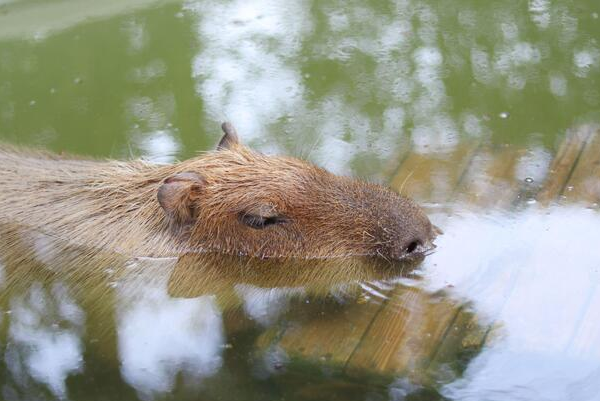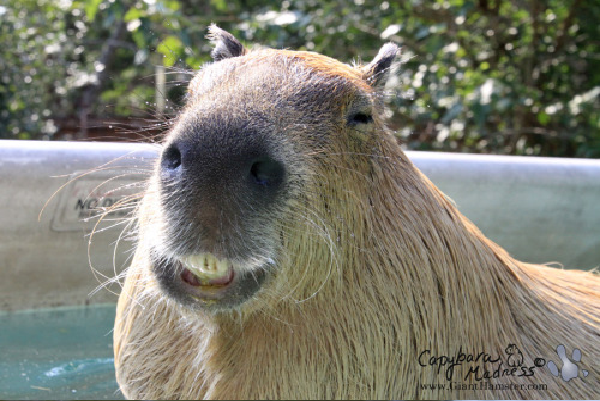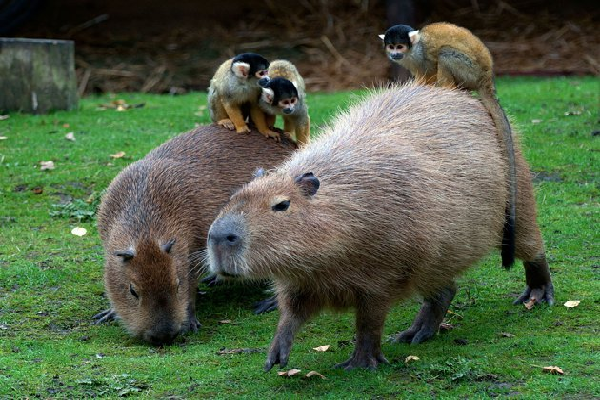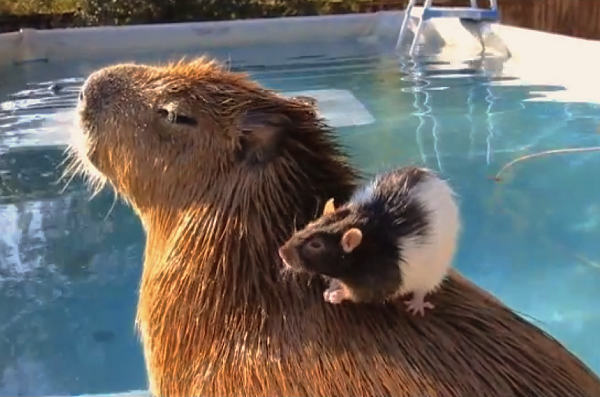#1 Capybaras can sleep in the water!

Capybaras can dive and stay underwater for up to 5 minutes at a time—often falling asleep in the water whilst keeping their nose at the edge of the banks. Napping along rivers, mangroves and marshes helps them to stay cool.3 Who could blame them in the hot Amazonian sun?
#2 Cappy teeth don't stop growing!

To make up for the constant wear and tear of eating tough aquatic plants and grasses—their pearly whites will just keep on growing! Like rabbits, their high-crowned, narrow-edge teeth are perfectly adapted for cutting up their food.
#3 Other animals use capybaras as furniture

Often referred to as “nature’s ottoman” or “moving chairs”, these friendly critters don’t ever seem to knock back a ride sharing request from another animal. A whole host of bird species, monkeys, rabbits, and even other Capybaras have been spotted seated, perched or laying on the back of a much-obliging Capybara.
#4 Adult capybaras can weigh as much as a person!

With an average weight of around 50 kilograms, these barrel-shaped mammals are certainly no field mice—weighing anywhere between 35 and 70 kilograms. Although female Capybaras are a little heavier than their male counterparts.
#5 They still behave like their rodent cousins!

Belonging to the cavy family (Caviidae), their closest relatives are actually guinea pigs and rock cavies. They’re essentially the rodent version of the hippopotamus—gnawing their food whilst swimming in the South American swamps. On a slightly grosser note, these guys eat their own dung to extract maximum nutrition from their food—much like rabbits. Don’t try that at home, folks!